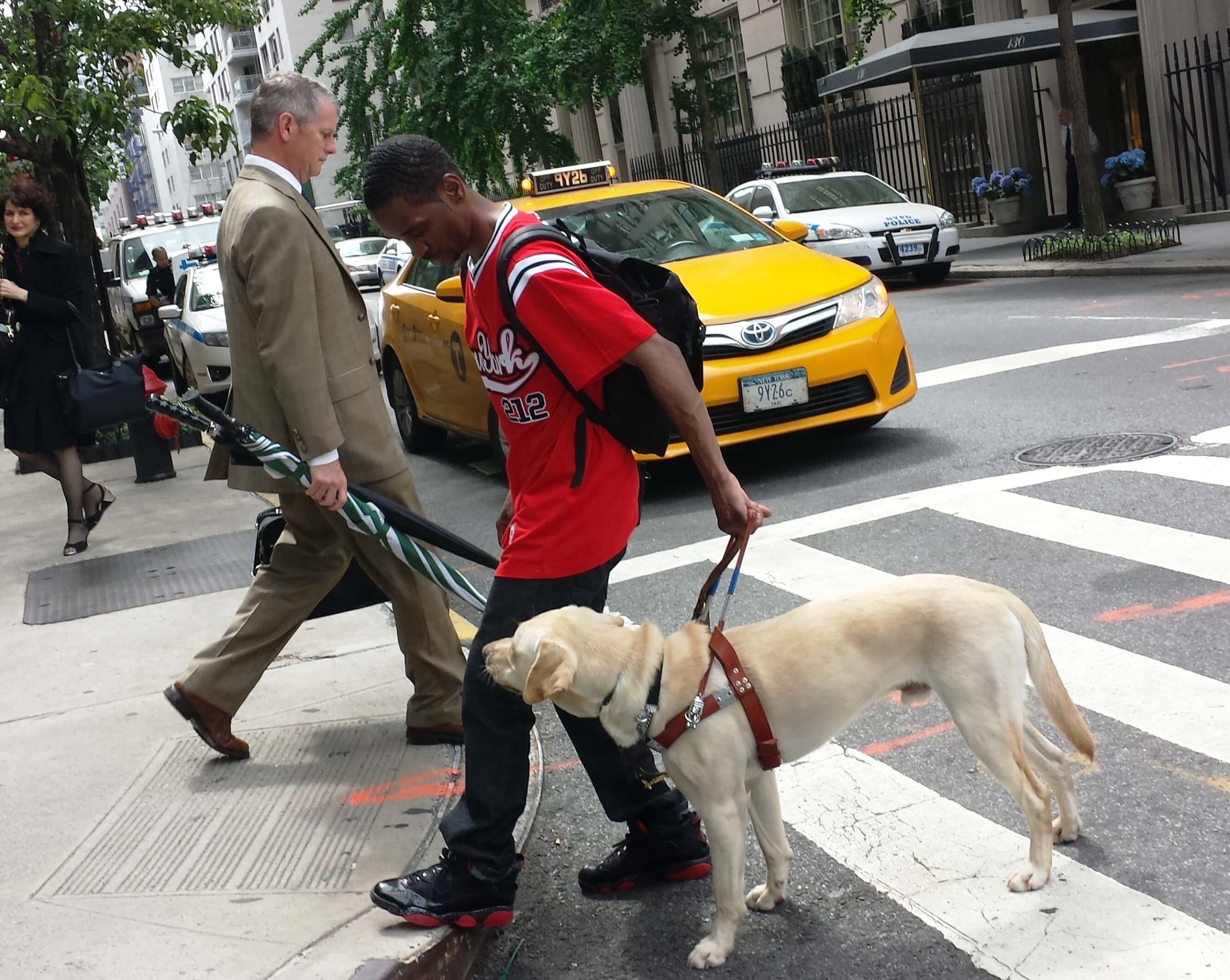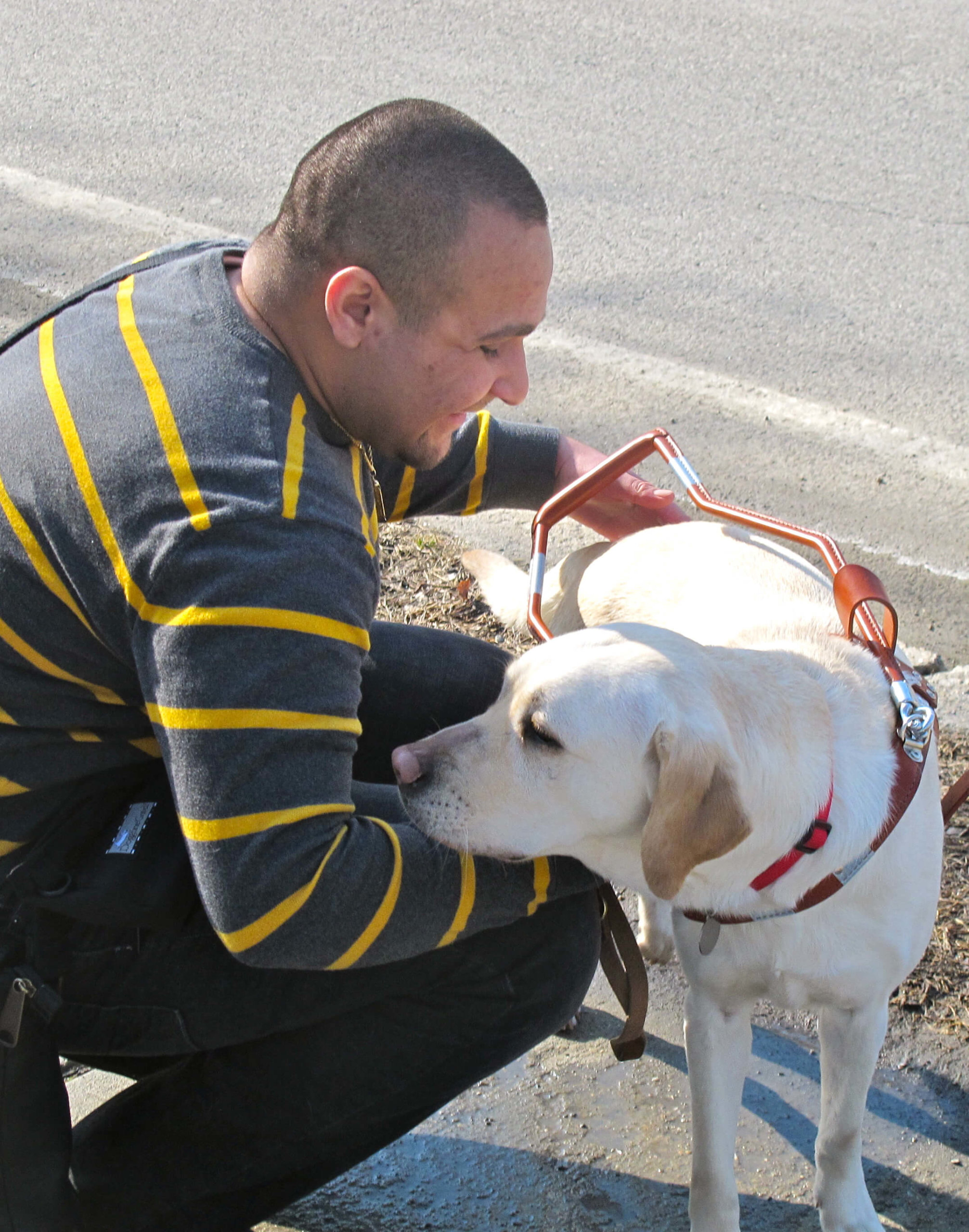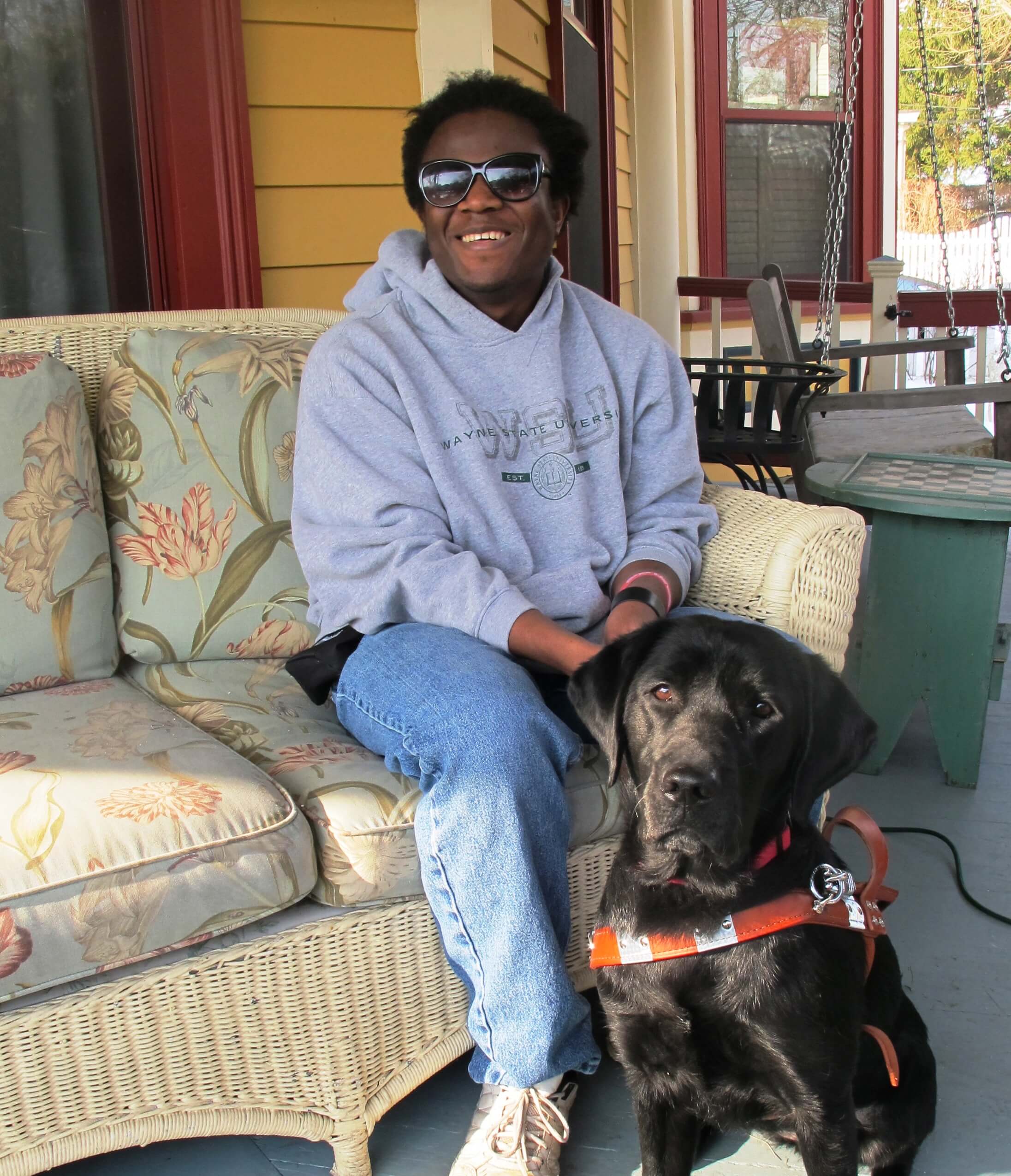Main Menu
Guiding Eyes graduate Brian Fischler’s article was originally published on Dogster on February 5th; the text below is an excerpt.
 5. Guide dogs are like taxi drivers
5. Guide dogs are like taxi drivers
No, Nash doesn’t know what subway stop I need. He’s not magic.
People assume that I just tell my guide dog where I want to go and it’s as simple as getting in a cab. Not the case. Guide dogs are trained to go from point A to point B, and you are constantly giving them verbal and hand commands to tell them where to go.
Guide dogs are trained to go from curb to curb. If you want to go to a store in the middle of the block you might give your guide as many as five commands, and if it is a store you have never been to before on a block with several stores and doors, you are still going to have to rely on sighted assistance to find the door of the exact store you are looking for.
Unfortunately, guide dogs don’t read the signs of the store and know exactly where you want to go, but if it’s a store that you frequent often, you can train your guide dog to take you to the door for that specific store. It just takes repetition, lots of praise, and of course a food reward for the dog to know and learn where you want to go.
4. Guide dogs tell you when to cross the street
One of the biggest questions I get as a guide dog handler is how does your guide dog know when to cross the street? He doesn’t. That’s right, guide dogs don’t know when the traffic light changes, I do.
Blind people listen for the surge of traffic, and they tell their guide dogs when they think it is safe to cross the street. Dogs are color blind so they can’t read the cross signal. We give them a hand signal when we think it is safe to cross the street, and the dogs are trained to not walk into on-coming traffic.
No, he doesn’t know the lights have changed.
 3. Guide dogs are also guard dogs
3. Guide dogs are also guard dogs
People often say to me, “It’s great that you have a dog that will lead you around and protect you.” As much as I would like to think that Nash would protect me if I ever was attacked, odds are he most likely won’t.
Nash is a Lab, so it isn’t in his nature to attack someone. He is about as passive as they come. Trust me, I have tried to freak some friends out by telling Nash to attack and sic, and you know what Nash does? He licks me. I told you he was pretty silly. Unfortunately, you can’t have the best of both worlds. It’s just not in the breed.
2. Guide dogs reach a point where they’re done with training
It amazes me how often I am asked if I am training Nash, and I respond, no, I’m blind. To which I often hear, really, you don’t look blind. Okay, let’s get beyond how unbelievably insulting it is to say that to someone, and focus on the guide dog here. Actually, guide dogs are always in training, as you are constantly teaching them new things. You are constantly going to new places, so whether it is teaching him a new bus stop, subway entrance, store, or any of a million things, guide dogs are always in training, even the fully working ones.
And the No. 1 biggest misconception about guide dogs:
 1. You can never pet a guide dog under any circumstances
1. You can never pet a guide dog under any circumstances
Some handlers don’t want you to pet their dogs while they’re in harness. Always ask first.
You may have heard that you should never pet a working guide dog. This is true, but it is also personal discretion of the guide dog handler to say when it is okay to pet their guide dog. Many do not want anyone to pet their guide dogs when they are in harness. Others, under the right circumstances, may tell people it is ok to pet their dog.
The key here is to always ask first. Just because you see a guide dog sitting quietly in a restaurant doesn’t mean he isn’t working. For the guide dog to sit there quietly in a restaurant is work. So if you ask to pet a guide dog and are told, “I’m sorry, but he’s working,” please respect the handler’s wishes.
I’m more lenient than most guide dog handlers. If Nash and I aren’t moving, I do let a lot of people pet him, especially women with kids, but I do have to warn them that Nash is a licker. There’s nothing more frightening to a blind guy than that ear-piercing scream a kid lets out as your dog’s big tongue slurps the kid’s face, and the mom storms away. Hey, your kid wanted to pet Nash, and Nash wanted to lick your kid. He’s a dog — what did you expect?
Want more? Visit Dogster to read misconceptions #6-10!